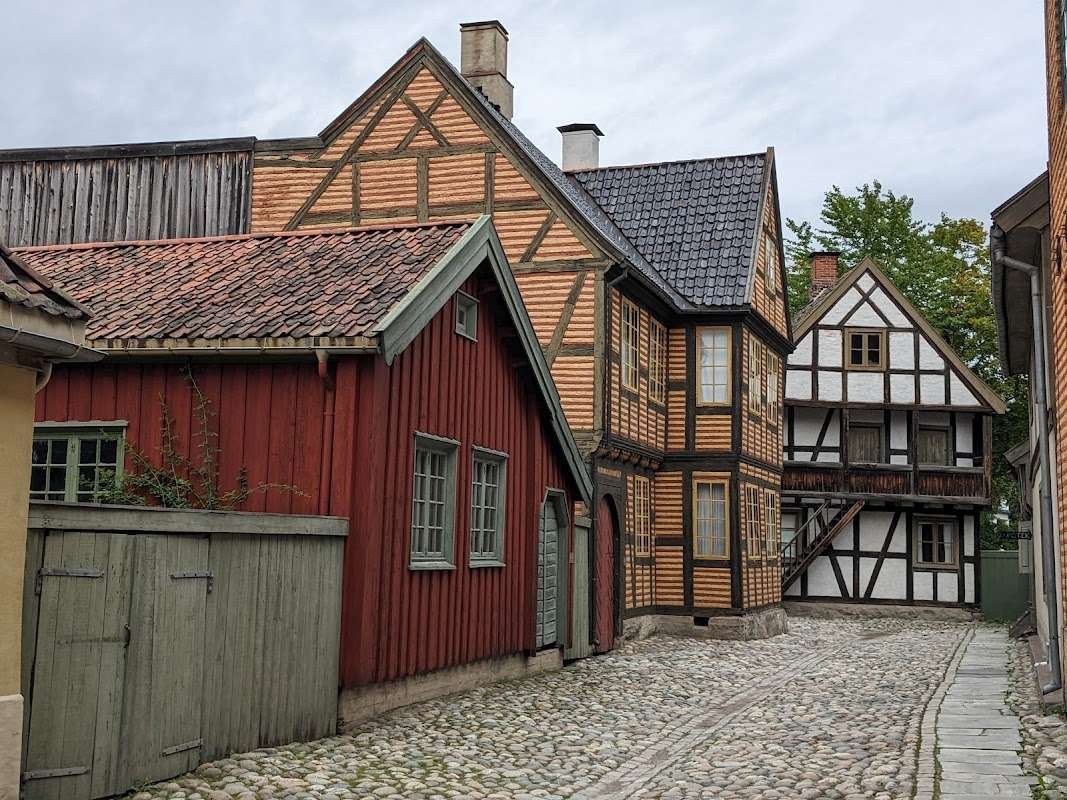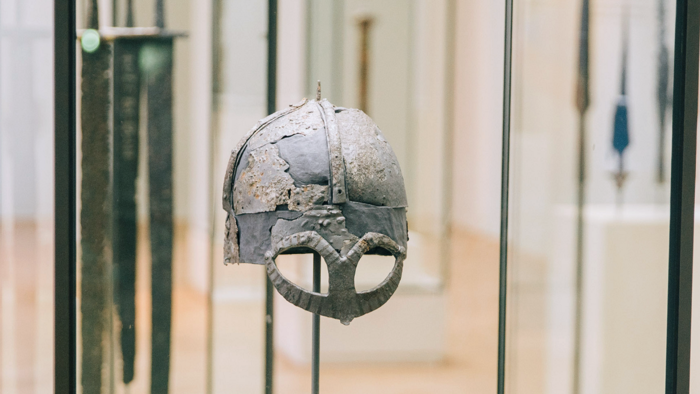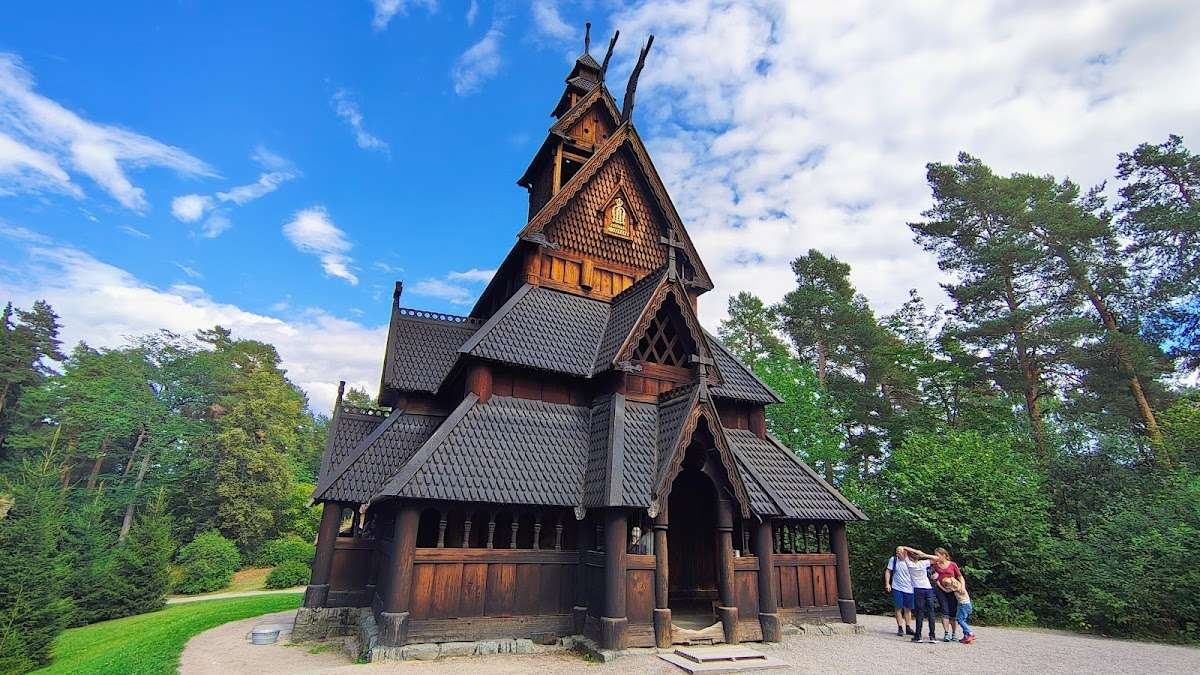Where Norwegian history comes to life: Norsk Folkemuseum vs Historical Museum
Oslo is the perfect place to experience the history of Norway in just two visits! On the Bygdøy peninsula, you'll find the incredible Norsk Folkemuseum with open-air villages, a "old town" quarter and the world-famous Gullstavirk. Right in the heart of the city is the Historical Museum (Cultural History Museum of the University of Oslo), which is a treasure trove of archaeological wonders. From the Stone Age to the Middle Ages, it boasts an impressive collection of Viking treasures and intricate carvings from wooden churches. This article is a must-read! Not only does it explain the different roles of the museums, but it also tells you what you should see in each one, how they complement each other, and where you can best learn about the birth of the capital from huts and stalls to a metropolis.

What is the main difference between the Norsk Folkemuseum and the Historical Museum, and who is responsible for what?
To put it briefly, the Folkemuseum is all about everyday life and traditions, both past and present. The Historical Museum is for anyone interested in archaeology and the early history of the world, including the Stone Age, Iron Age and Middle Ages, as well as the Viking era. The former is in Bygdøy and is known for its buildings and the Gullstavkirke. The latter is in the centre, in a historic Art Nouveau building, and has the country's largest collections of archaeology and ethnography. Together, they show us life as it was in the past.
What is the "open-air" at Norsk Folkemuseum and why is it special?
It is a large open-air museum with around 160 historic buildings from towns and villages across Norway. These date from the Middle Ages to the 20th century. Here, you can walk through different areas and periods of history, such as peasant farms, fishermen's houses, shops, schools and entire street sections. This way of displaying things makes you feel how big things are. You can see the layouts, materials, courtyards and the "air" of the time – things that you cannot read about in display cases.
What are the best open-air attractions? Golstavkirke and the Old Town?
Make sure you visit Gol Stave Church. This medieval wooden church was moved to Bygdøy and restored to look how it did in the 13th century. In the Old Town, visit the house at Wessels gate 15. Inside, you'll find eight rooms from different decades, along with mini-exhibitions about city life. This pair of books is a quick way to compare the old days in medieval Norway with modern times. You can find more information about portable stave churches in article #28, "Stave churches in open-air museums."
How does Folkemuseum show regional differences, like in the costumes, houses and customs?
We offer a wide range of products, from traditional festive costumes to everyday work clothes, as well as furniture and textiles. The exhibitions explain why one style or decoration is found in one valley but not another. This is shown by the different types of households and layouts, which show that climate, crafts and trade had a big effect on everyday life, as well as traditions. A good place to start is the Folk Dress: The section for festive dresses and workwear is here.
What can you see in the Historical Museum that is related to archaeology? It covers the Stone Age and the Middle Ages.
Here you will find the "backbone" of Norwegian antiquity: the Stone Age (stone tools, early jewellery), Bronze and Iron Ages, the Viking Age with its treasures and weapons, and medieval church art. The collections are presented in order, so you can see how materials, rituals, trade and power changed over time. This is the best example of the "living" interiors of Bydgøy: first the roots, then everyday life and traditions.
Where can you see Viking archaeology in Oslo today while the ship museum is closed?
Go to VÍKINGR at the Historical Museum. There, you will find the helmet from Gjermundbu (the only one that has not been damaged) and gold from Høen, the largest Viking treasure found in Norway. In the summer of 2025, the museum put the original "snake head" from the Oseberg ship on display for the first time. This famous piece of woodcarving is a true icon. The exhibition is made even better with jewellery, coins and everyday objects that show us about trade and rituals.

How are the medieval rooms set up in the Historical Museum?
Look for the Medieval Gallery, where you will find carved doors, chairs and objects from medieval wooden churches. This is an excellent introduction to Norwegian religious culture before the Reformation. On the guided tours, the museum experts stop to point out the carvings on the stave churches and the ways in which they were made. They show how the designs, which at first were based on trees and decorations, started to be based on Christian symbols instead.
Where can you learn about the development of the capital from medieval Oslo to modern Christiania?
The "urban" story is mostly told by the "Old Town" in the Folkemuseum (houses and workshops from Christiania) and the specialised Museum of Oslo in Frogner Park. These places show how the capital grew, which districts appeared and how the daily life of the people living there changed. This pair show a picture of the street and some of the history of the area.
Which artefacts at the Historical Museum should you really see?
There are three main things to look at:
- A helmet from Gjermundbu (this shows how the protection was made and what the warriors actually wore)
- The Hoen treasure (this has jewellery, coins and beads, which show contacts from Franconia to the East)
- Medieval church carvings (these show iconography, technique and paints) These items quickly show Norway as part of a larger European history — with a local character and distant connections.
What makes the Historical Museum building itself interesting?
It is one of the best examples of early 20th-century Norwegian modernism/Jugendstil, a style of art and design that was popular in the early 1900s. It was designed by architect Henrik Bull. Inside, the rooms are arranged in a classic style, where art and archaeology can be enjoyed in peace, without any "noisy" effects. Even if you came for the Vikings, take a look around. The architecture helps to balance the size of the collection and makes the museum feel special and serious.
How can you visit both museums in one day?
Start your trip in the morning at the Historical Museum in the centre of the city. You can see archaeology from stone to the Middle Ages and Viking artefacts (helmets and treasures). After lunch, go to Bygdøy to visit the Norsk Folkemuseum, which has the "Old Town" quarter and the inside of Wessels gate 15. Then finish at Gol Stave Church. This makes for a route "from antiquity to tradition and urban life." If you want, you can add Buudøy's neighbours (the maritime and polar museums). These museums beautifully combine history with the sea.
What is the difference between Gol Stave Church in the Folkemuseum and "regional" stave churches?
Gol is a relocated and restored church. It shows what a church in the valley would have looked like, but it is kept in a museum instead of in the valley. It's a simple "cheat sheet" for anyone who won't travel to the mountains. If you want to compare it with "living" churches, look at regional stave churches (for example, Borgun). This way, you will see both the architecture and the context of the area.

Amazingly, two museums offer two very different perspectives on the same country! The Historical Museum is a treasure trove of centuries and objects that have survived the tests of time. The Norsk Folkemuseum brings the streets, thresholds and smell of resin of Golstavkirke to life, making history feel tangible once again. Together, they take you on a journey to discover the rich history of Norway, including the country's fascinating capital and the incredible importance of wood carving to the national character. Come, explore, compare, and let the museums' different voices speak to you.
We would absolutely love to hear your thoughts in the comments!
If you have any interesting photos, personal experiences or questions on the topic, we would love to hear them – please leave a comment! We can't wait to hear from you, because we're on a mission to create the most popular and useful blog about Norway!





1 comment
Log in to leave a comment